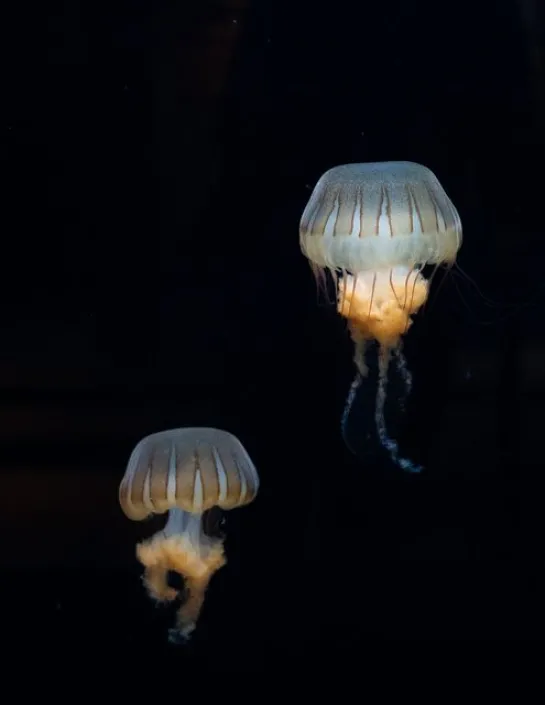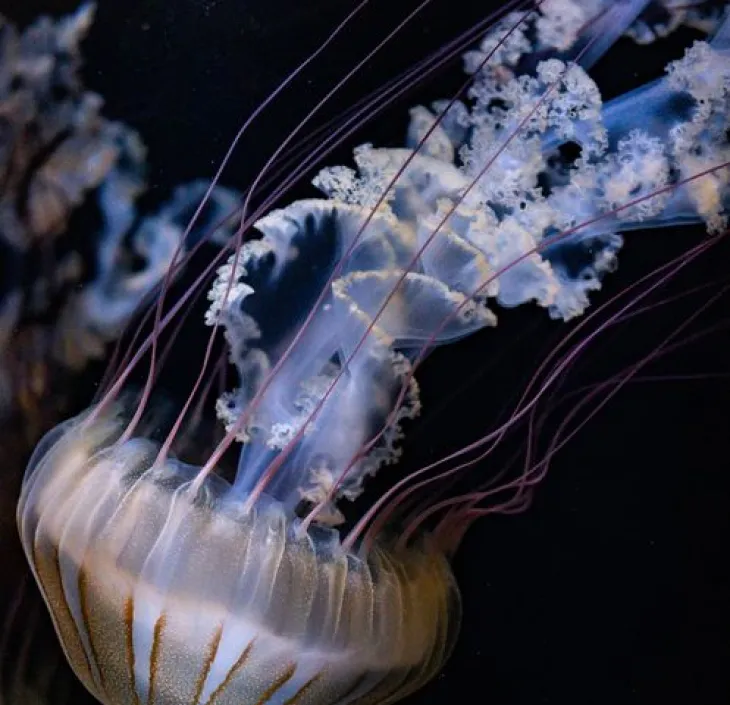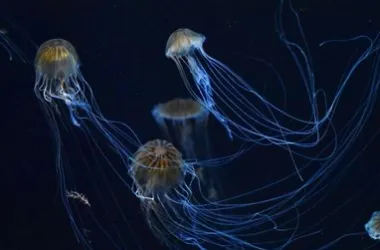This jellyfish reproduces asexually. Baby jellyfish, called polyps, multiply and then split into a series of small jellyfish called ephyrules.
Jellyfish are cnidarians just like anemones and coral.

Jellyfish & Ctenaria

Identity card
Pacific Ocean, near Japan. This jellyfish is thought to be endemic to Japan.
A pelagic open water species living at depths down to 200 m.
It has an average diameter of about 30 cm.
Its diet consists of small fish, crustaceans and even other jellyfish such as moon jellyfish.

Chrysaora is a source of type II collagen, which is notably used to relieve osteoarthritis.
This jellyfish reproduces asexually. Baby jellyfish, called polyps, multiply and then split into a series of small jellyfish called ephyrules.
Jellyfish are cnidarians just like anemones and coral.
At Nausicaá the Japanese sea nettle feeds on planktonic shrimps, fish eggs and even small fish.
This jellyfish lives near Japan. The "Japanese sea nettle", also known as the Pacific compass jellyfish, is a pelagic species living in open water down to depths of 200 m.
It has an average diameter of about 30 cm.
This jellyfish is often surrounded by young fish that momentarily manage to protect themselves from the venom of the tentacles.
in the eye of the climate

The Ocean Mag
In the spotlight
A look back at the year's births at Nausicaá.

Article
The Portuguese Parliament has adopted a moratorium banning seabed mining in its territorial waters until 2050.
Article
Combining art, science and industry to restore coral reefs.